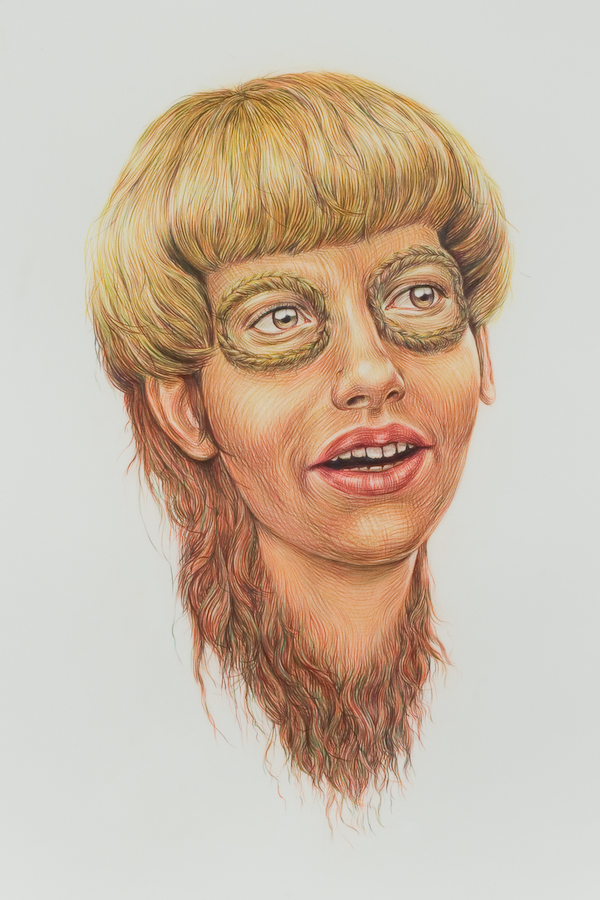STOMPING THE MODERN
On Saturday, May 21, my girlfriend and I went to The Museum of Modern Art and two galleries, Gering and Lopez and Greenberg Van Doren. Suffice to say that I was thoroughly gratified by my visit to the MoMA, and I didn’t even see a film or sit in the garden! (Yes, of course, the art should be enough)
Though it’s been years since MoMA was rebuilt I am finally getting accustomed to its new structure, how it arranges space, and the habits of people within it. I am getting to like some of it. The lobby is still a mess, more like an indoor parking lot with people instead of cars, but I like the area between the admission gate and the garden. There is a large low couch to one side where you can see people pass to and fro, with a short staircase before the large plate glass windows that look out over the garden. I enjoy sitting there and watching people’s actions and expressions as they are about to leave the museum.
At first, we took the escalators up to the 3rd floor where we saw shows about the art and music culture (“Looking at Music 3.0”), conceptual drawing and politics (“I Am Still Alive: Politics and Everyday Life in Contemporary Drawing”), and architecture (“Building Collections: Recent Acquisitions of Architecture”). The shows that we saw there were all good in their own way but minor distractions compared with the two main exhibitions, “German Expressionism” and “Francis Alys: The Story of Deception”. Let me talk briefly about each of them as I think that each contained good things.
Looking at Music 3.0, curated by Barbara London, was supposed to be about contemporary art and its relationship to the popular culture emerging from music. This being the 3rd installation in the series the initial novelty of the idea may have already worn a bit thin. Yet it was the first of them that I viewed. I liked some of what I saw. There were three videos rotating on a central screen, which included Leaders of the New School’s “What’s Next,” Grace Jones’ “I’m Not Perfect (But I’m Perfect For You)” and Diamanda Galas’ “Double Barrel Prayer”.
Each of these videos represents a different layer of my early experiences with music—how it can change and yet remain an essentially aesthetic experience. Now call me plebeian, but I don’t think of everything I see as an art form. When I see a music video from 1993, even if it was considered innovative at the time, I have a hard time banishing it from who I was emotionally when I was 26 years old. The band itself is a bunch of rappers, now much more famous, who were then young, some of them with their own groups, banding together here to create a different kind of energy. The name of their band is a take on academic snobbism, a reference to the sort of pretentious verbiage that accompanies movements and he branding of political and sociological agendas in small, urbane circles of thinking. The song is hard to follow, mostly poetical rants, but the video itself manages to analyze itself as it progresses, with images of the band cavorting, bragging, wearing crazy clothes, but the screen also includes images of the editing software that is used to create the videos themselves, and when a certain hair style appears it flashes the name of it in a series of windows. What the video infers is a self-conscious series of actions; nothing we say or do can ever be completed without being named, branded in passing, so we complete our actions and own the brandings.
The video of Grace Jones is actually directed by the famous artist Keith Haring, who was a white, gay graffiti artist known for his playful imagery that spanned pop culture, religion, and the AIDS crisis. Part of the video shows him painting his trademark figures onto a huge white skirt which Grace dons to sing the finale of her song, with the dress undulating in cuneiformed layers thirty feet on either side of her. The lyrics of her song concern her own female imperfection even as she sets herself up as a deity, towering above others, as if to say that no one is perfect, but in their imperfection, they are right for everyone else. Whether we believe her or not depends on how coy or ironic we feels she is acting. But despite her grandiose delivery there is a kernel of universal truth in the words, so we can at least take that with us. The video also acts as a tribute to Haring, who died shortly after it was made.
The last video, by Galas, was actually new to me, as it would not have been featured on MTV. Her singing style is quite unique, operatic or chantlike but sounding like fingernails on a blackboard or breaking glass. The video is a performance piece with Galas outfitted in skintight black leather, her hair braided and pulled back with dark glasses covering her face. She is all expressions and gestures, which alternate between praying and putting the poor cameraman in the crosshairs of an actual gun. At some point she is covered in cow’s blood and writhes around, screaming and chanting. It is horrific and sensual at the same time. I pictured myself, a relative ingénue, standing in a club where she’s performing right next to me. It was that real.






Comments